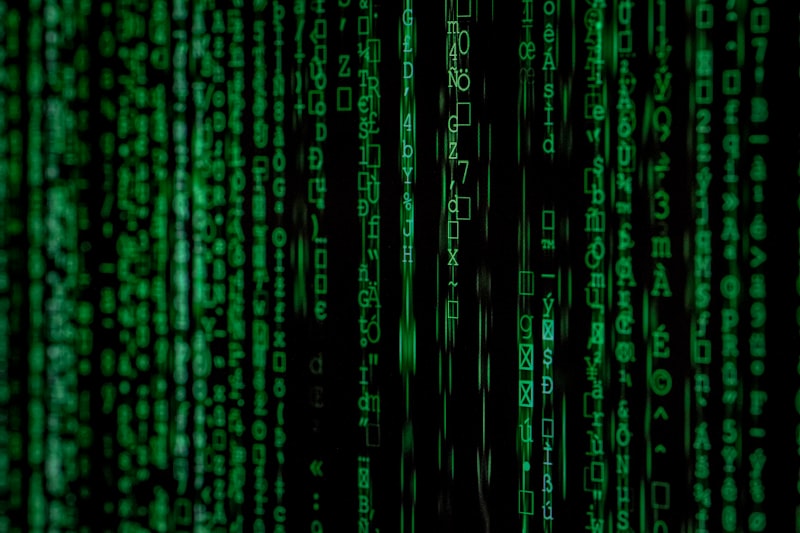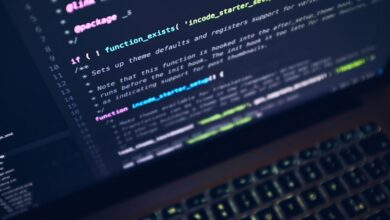Data Privacy and Protection of Personal Data

In today’s interconnected world, where technology intertwines seamlessly with our daily lives, ensuring the security and privacy of personal data has become paramount. As we navigate through the digital landscape, the need to safeguard our valuable information has never been more crucial. In this article, we delve into the realm of data privacy and the protection of personal data, shedding light on its significance and offering insights into best practices.
Our personal data is a treasure trove, encompassing a plethora of sensitive information such as our names, addresses, financial details, and even our online behaviors. With cyber threats looming at every corner, it is imperative to comprehend the gravity of data privacy and take proactive measures to safeguard ourselves from potential harm.
Data privacy refers to the control individuals have over their personal information and how it is collected, used, stored, and shared by organizations. It empowers individuals to exercise authority and make informed decisions regarding their digital footprint. By setting boundaries and granting consent, we can ensure our personal data remains within our jurisdiction, protected from unauthorized access and misuse.
Protection of personal data involves implementing robust security measures to safeguard it against breaches, theft, or unauthorized disclosure. Organizations play a pivotal role in this process by adopting stringent policies, employing encryption techniques, and regularly auditing their systems to identify vulnerabilities and strengthen defenses.
But why should data privacy matter to us? Well, imagine your personal data as a key that unlocks doors to various aspects of your life. From financial transactions to healthcare records, social media interactions to online shopping, our digital activities leave behind a trail of information. Ensuring data privacy ensures that this key remains secure, preventing malicious actors from gaining unwarranted access to our lives.
As technology advances, so do the risks associated with data privacy. Cybercriminals constantly devise new tactics to exploit vulnerabilities and gain unauthorized access to personal data. Without proper safeguards, our sensitive information could end up in the wrong hands, leading to identity theft, financial fraud, or even reputational damage.
The Data Privacy Revolution: How Individuals Are Taking Control of Their Personal Data

In today’s interconnected world, data privacy has become a hot topic of discussion. Individuals are increasingly concerned about how their personal data is being collected, stored, and used by various entities. This has sparked a data privacy revolution, where people are taking control of their own information and demanding greater transparency from companies and institutions.

But what does this data privacy revolution entail? It means that individuals are becoming more aware of their rights and are actively seeking ways to protect their personal data. They are no longer willing to blindly trust organizations with their information, but instead are taking matters into their own hands.
One way in which individuals are asserting control over their personal data is through the use of privacy settings and consent options. Many platforms and services now offer users the ability to customize their privacy preferences, allowing them to choose what information they want to share and with whom. This empowers individuals to make informed decisions about their data and gives them the ability to limit access to sensitive information.
Moreover, people are becoming more conscious of the data they share online. They are realizing that every click, like, and share leaves a digital footprint that can be collected and analyzed. As a result, individuals are adopting privacy-conscious habits such as using encrypted messaging apps, employing virtual private networks (VPNs), and regularly reviewing the permissions granted to mobile applications.
Furthermore, the data privacy revolution has spurred the development of innovative technologies that enable individuals to take back control. For instance, blockchain technology has emerged as a promising solution for securing personal data. Its decentralized nature and cryptographic protocols provide enhanced security and give individuals ownership and control over their data.
The data privacy revolution is empowering individuals to reclaim control over their personal data. Through increased awareness, the use of privacy settings, and the adoption of privacy-conscious habits, people are asserting their rights and demanding greater accountability from organizations. As technology continues to evolve, we can expect to see even more advancements in data privacy, ensuring that individuals can navigate the digital landscape with confidence and peace of mind.
Data Breach Epidemic: The Rising Threat to Personal Privacy
In today’s digital age, where our lives are intertwined with technology, the rising threat to personal privacy looms larger than ever before. We are witnessing a data breach epidemic that has the potential to impact all aspects of our lives. From financial information to personal photos and sensitive documents, our private data is at risk of falling into the wrong hands.
But what exactly is a data breach? Simply put, it occurs when unauthorized individuals gain access to confidential information without permission. This can happen through various means, such as hacking into databases, exploiting vulnerabilities in software, or even through human error. Once a breach occurs, the repercussions can be devastating.
The consequences of a data breach are far-reaching. Identity theft, financial loss, and reputational damage are just a few of the potential outcomes. With personal data readily available on the dark web, criminals can use this information to carry out fraudulent activities, leaving victims to pick up the pieces.
One might wonder why data breaches have become so prevalent. The answer lies in the immense value of personal information. Data has become a valuable currency in the digital realm, with cybercriminals constantly seeking ways to exploit it for their benefit. As technology advances, so do the tactics employed by those who seek to compromise our privacy.

Protecting personal privacy in the face of this epidemic requires a multi-faceted approach. Individuals must take proactive measures to safeguard their data, such as using strong, unique passwords, enabling two-factor authentication, and being vigilant about sharing personal information online. Additionally, organizations need to strengthen their security protocols, regularly update software, and prioritize employee training to mitigate the risks posed by data breaches.
The data breach epidemic poses a significant threat to personal privacy. As we navigate the digital landscape, it is essential to remain mindful of the potential risks and take necessary precautions to protect our data. By staying informed, practicing good cybersecurity habits, and demanding accountability from organizations that handle our information, we can work towards a safer, more secure digital future.
Behind the Scenes: Unveiling the Dark Side of Data Collection and Its Impact on Privacy
Imagine a world where every move you make, every click you take, is meticulously recorded and analyzed. Welcome to the era of data collection, where modern technology brings convenience at the cost of our privacy. In this article, we delve into the darker side of data collection, exposing the hidden intricacies that leave us vulnerable and raise important questions about our privacy.
From the moment we wake up and grab our smartphones, data collection begins its silent operation. Our devices track our location, record our online activities, and gather information about our preferences and behaviors. This vast amount of personal data becomes a valuable asset for businesses and organizations seeking to understand consumer patterns and target specific audiences.
But what happens behind the scenes? Companies collect and store these mountains of data, often without our full knowledge or consent. They create comprehensive profiles of individuals, piecing together fragments of our lives in ways that can be both astonishing and unsettling. Our browsing habits, social media interactions, and even our private conversations become part of an intricate mosaic that reveals more about us than we might imagine.
Moreover, the methods used for data collection often lack transparency. Invisible trackers and cookies follow us across the internet, leaving digital footprints that are difficult to erase. We become unwitting participants in a data-driven economy, where our personal information is bought and sold by numerous entities, all hungry for insights and profit.

The implications for privacy are profound. With so much data available, the potential for abuse looms large. Personal information can be leaked, hacked, or misused for targeted advertising, manipulation, or even surveillance. The very notion of privacy as a fundamental human right is challenged in this digital age, leaving us wondering how much control we truly have over our own information.
The ubiquitous nature of data collection exposes us to a multitude of privacy concerns. As we enjoy the benefits of technology, it is essential to remain aware of the trade-offs we make. The dark side of data collection reminds us of the delicate balance between convenience and safeguarding our personal lives. Let us navigate this digital landscape with caution, demanding transparency, accountability, and robust safeguards for our privacy in an increasingly data-driven world.
In today’s digital age, our personal data is a valuable asset that needs protection. With cyber threats lurking at every corner of the internet, it’s crucial to arm ourselves with knowledge and take proactive measures to safeguard our personal information. From online shopping to social media interactions, we leave behind digital footprints that can be exploited if we’re not careful. So, how can you navigate this digital minefield and protect your personal data? Let’s dive in.
First and foremost, strong and unique passwords are your first line of defense. Avoid using common phrases or easily guessable patterns. Instead, opt for a combination of uppercase and lowercase letters, numbers, and special characters. It may seem daunting to remember all those passwords, but using a password manager can make it effortless while ensuring the highest level of security.
Another essential step is to enable two-factor authentication (2FA) whenever possible. By adding an extra layer of verification, even if someone manages to get hold of your password, they won’t be able to access your accounts without the second factor, which could be a unique code sent to your phone or email.
When it comes to sharing personal information online, always be cautious. Think twice before providing sensitive details on social media platforms or unfamiliar websites. Cybercriminals often use these platforms as hunting grounds for potential targets. Remember, once information is out there, it can be challenging to retract it.
Regularly updating your devices and software is vital. Software updates often include patches and fixes for security vulnerabilities that hackers exploit. Ignoring those updates is like leaving a door wide open for cybercriminals to sneak in. Stay vigilant and ensure your operating system, antivirus software, and applications are up to date.
Additionally, be wary of phishing attempts. These scams masquerade as legitimate emails, messages, or websites, tricking users into revealing their personal information. Always double-check the sender’s email address, scrutinize suspicious links, and be cautious of unexpected requests for personal data.

Safeguarding your personal data in the digital minefield requires proactive measures and constant vigilance. Remember to use strong and unique passwords, enable two-factor authentication, be cautious about sharing personal information online, keep your devices and software updated, and stay vigilant against phishing attempts. By implementing these expert tips, you can build a strong defense and navigate the digital landscape with confidence, ensuring your personal data remains secure.




